Understanding the Foundation: Imitation and Observation in Learning
Applied Behavior Analysis (ABA) is a widely used therapeutic approach for children with autism, emphasizing the development of social, communication, and motor skills through structured teaching strategies. Central to ABA are the concepts of imitation and observational learning, which serve as crucial pathways for skill acquisition. This article explores how ABA therapy promotes these cognitive processes, the techniques involved, their importance for children with autism, and the research underpinning their effectiveness.
The Significance of Imitation Skills in ABA Therapy
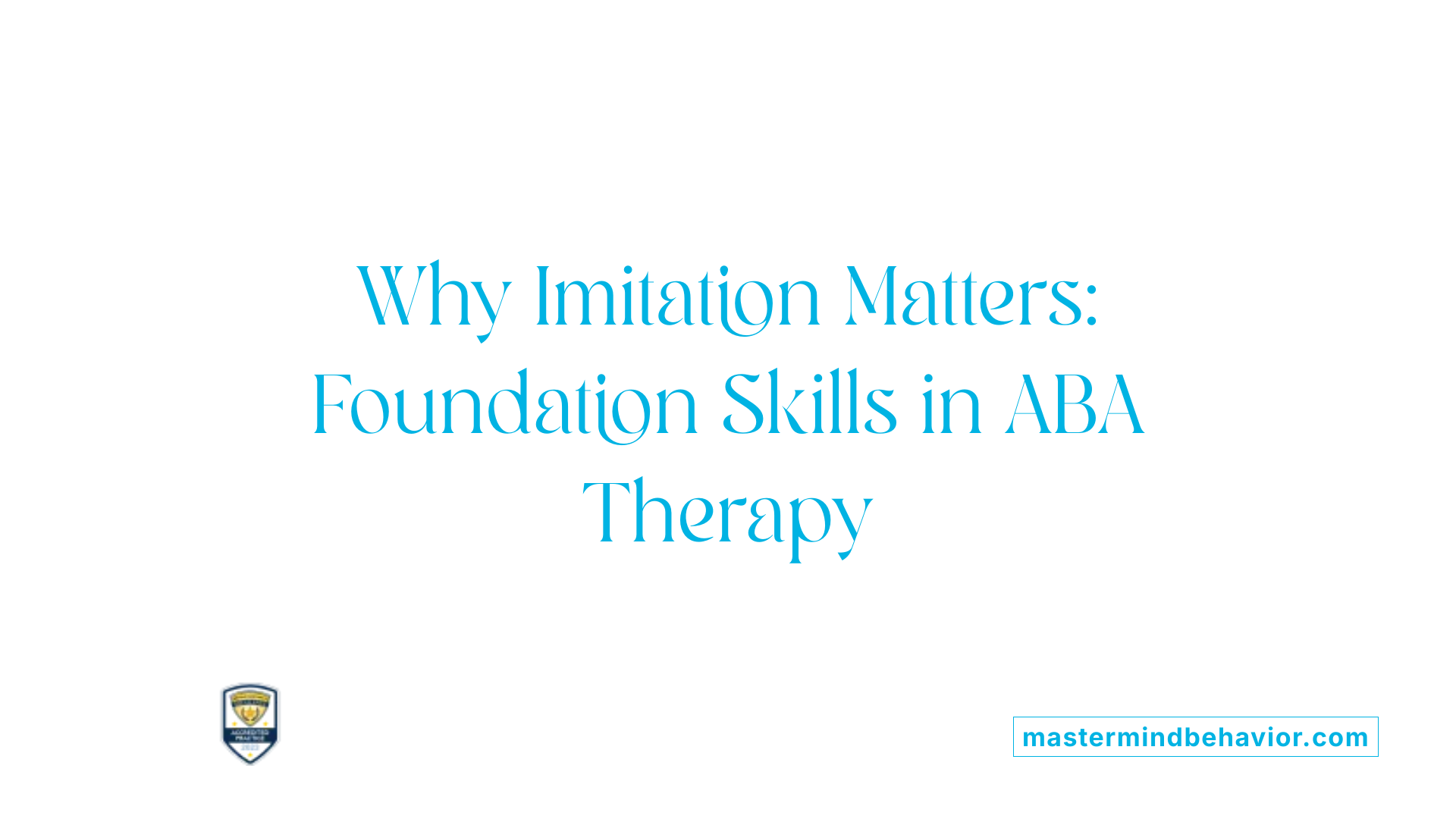
Why are imitation skills important in ABA?
Imitation skills play a crucial role in Applied Behavior Analysis (ABA) therapy because they form the foundation for learning various behaviors essential for a child's development. When children are able to imitate others, they can acquire new social interactions, communication skills, and motor abilities.
Through focused teaching methods—such as modeling, prompts, and reinforcement—therapists help children develop these imitation skills systematically. As these skills improve, children become better at observing and mimicking behaviors from their environment.
This ability to learn by watching others enables children to participate more actively in social and daily routines. It also helps them understand the purpose behind actions, which is especially beneficial for children with autism who often have challenges in observational learning. Developing imitation skills not only enhances immediate skill acquisition but also sets the stage for more complex learning, leading to improved independence and social integration.
In summary, teaching imitation within ABA promotes overall growth by fostering essential communication, social, and motor skills that are vital for children’s successful functioning in both structured and natural settings.
Mechanisms Behind Imitation and Observational Learning in Children with Autism
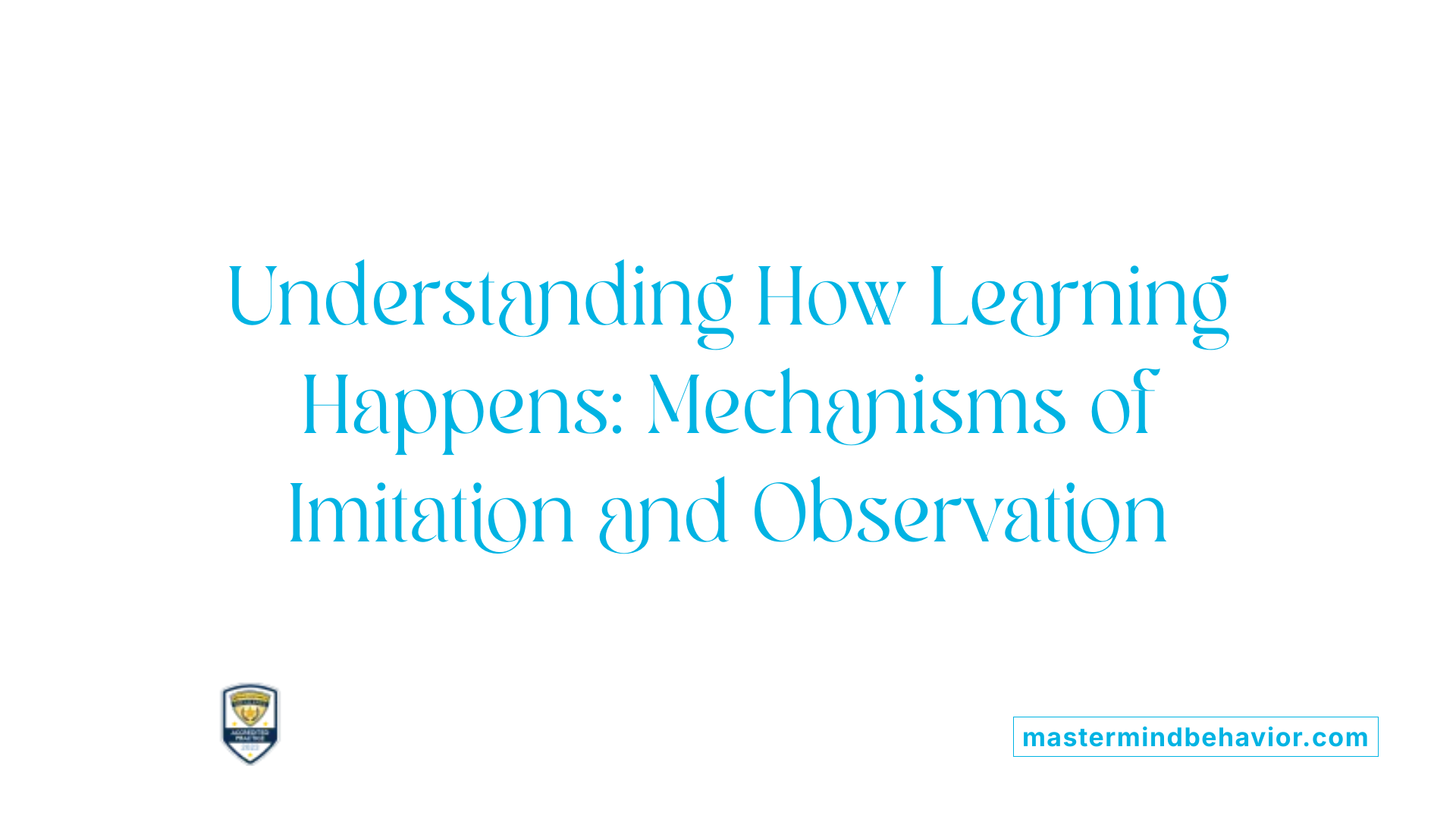
What is imitation and observational learning in ABA?
Unlike mere imitation, which is a simple copying of actions, observational learning involves cognitive processes such as focusing on the model (attention), storing the information in memory (retention), physically or mentally mimicking the behavior (reproduction), and having the motivation to do so, often influenced by reinforcement.
Imitation in ABA is foundational for developing communication, social, and motor skills. It entails replicating behaviors, gestures, or sounds after observing them, often through structured techniques like modeling, prompting, and reinforcement.
Observational learning, also known as social or vicarious learning, extends beyond simple copying. It includes understanding the reasons behind behaviors, which helps in applying learned skills in new situations. It involves observing responses and consequences in social environments, thus enabling children to learn through watching others.
Both processes are vital in promoting complex behaviors and increasing overall developmental progress, especially in children with autism.
What cognitive processes are involved in observational learning?
Observational learning depends on four main cognitive steps:
| Process | Description | Example |
|---|---|---|
| Attention | Focusing on the model to notice specific behaviors | Watching a peer solve a puzzle |
| Retention | Storing the observed information in memory | Remembering the steps a peer used to build a block tower |
| Reproduction | Physically or mentally copying the behavior | Imitating the peer’s drawing technique |
| Motivation | Having the desire or encouragement to repeat the behavior, often driven by reinforcement | Repeating a skill after praise |
Attention is influenced by the model’s attractiveness, similarity, or perceived authority. Retention requires memory skills to remember sequences. Reproduction depends on physical or cognitive ability, and motivation is sustained through reinforcement or positive outcomes.
Challenges faced by children with autism in learning through observation
Children with autism often encounter difficulties in observational learning, stemming from challenges in attention, memory, and imitation. They may struggle to attend to social cues or retain information, which inhibits the ability to imitate behaviors accurately.
This can lead to deficits in acquiring new skills related to language, social interaction, and daily routines. As visual learners, children with autism may benefit from visual supports, but structured teaching remains essential.
Recent research suggests that explicitly teaching monitoring responses—like paying attention and imitating—can help facilitate observational learning. For example, training children to monitor their peers’ responses improved their sight word recognition, indicating that targeted intervention in observational processes can promote learning.
In ABA therapy, strategies such as modeling, prompting, reinforcement, and caregiver training are used to strengthen imitation and observational skills. Supporting these processes directly impacts language development, social skills, and independence.
| Learning Aspect | Description | Impact on Autism Learning |
|---|---|---|
| Attention | Focusing on social models | Limited in some children, mitigated by visual supports |
| Memory Retention | Remembering observed behaviors | Can be impaired, requiring repeated practice |
| Reproduction | Imitating observed actions or speech | Challenging but improved with prompting |
| Motivation | Desire to perform or repeat observed behaviors | Enhanced through reinforcement |
Ultimately, understanding these mechanisms allows practitioners to tailor interventions that support children with autism in acquiring vital life skills through observation and imitation.
Techniques Used in ABA to Teach Imitation
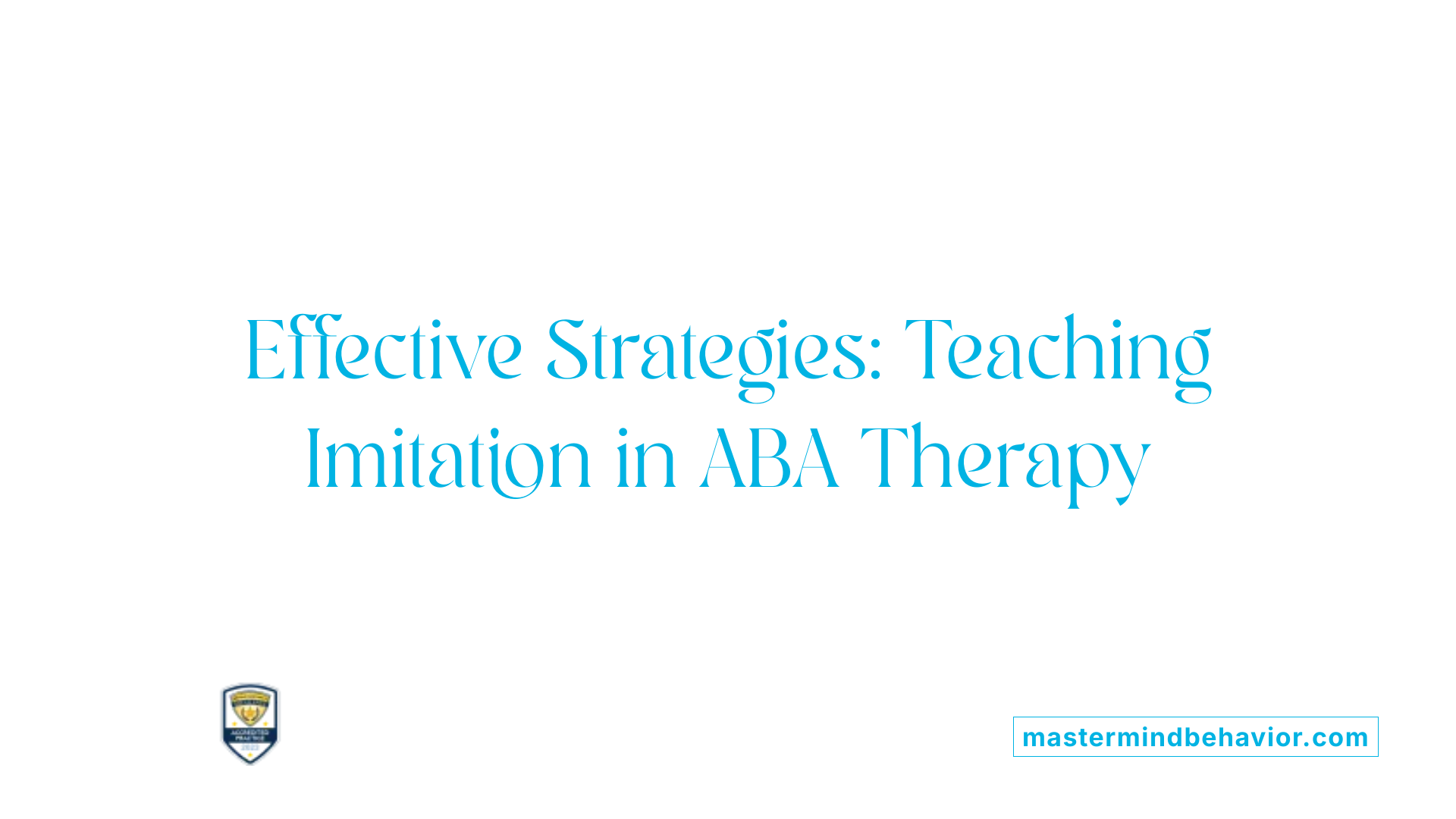
What techniques are used in ABA therapy to teach imitation?
In Applied Behavior Analysis (ABA) therapy, teaching imitation involves several structured strategies designed to help children acquire and strengthen their ability to imitate. One primary approach is modeling, where the therapist demonstrates the desired behavior clearly and consistently.
Prompting strategies are essential in guiding children to imitate correctly. These prompts can take various forms, including physical prompts like guiding the child's hand, verbal prompts such as giving instructions, or gestural prompts like pointing or making specific signals. The goal is to provide just enough assistance to enable successful imitation without creating dependency.
Reinforcement principles, especially the Premack Principle, play a critical role in encouraging imitation. This principle suggests that preferred activities or items can be contingent on performing the target behavior, making imitation more motivating. For example, a child might be allowed access to a preferred toy after successfully imitating a gesture.
A key technique is gradually fading prompts over time. As the child becomes more proficient at imitation, prompts are systematically reduced to promote independence. This fading process ensures that the child learns to imitate without constant guidance.
Beginning with gross motor imitation—such as clapping or waving—is recommended because these movements are easier for children to learn and discriminate. Such foundational skills then serve as a stepping stone toward more complex behaviors, including fine motor actions and speech imitation.
In practice, therapists often vary actions, behaviors, and contexts to promote generalization—helping children replicate learned skills across different settings and situations. Regular data collection is essential to monitor progress, identify areas needing adjustment, and evaluate the effectiveness of techniques used.
Overall, these combined strategies help children with autism develop essential social, communication, and motor skills through structured imitation training.
Guidance for Caregivers: Promoting Imitation at Home
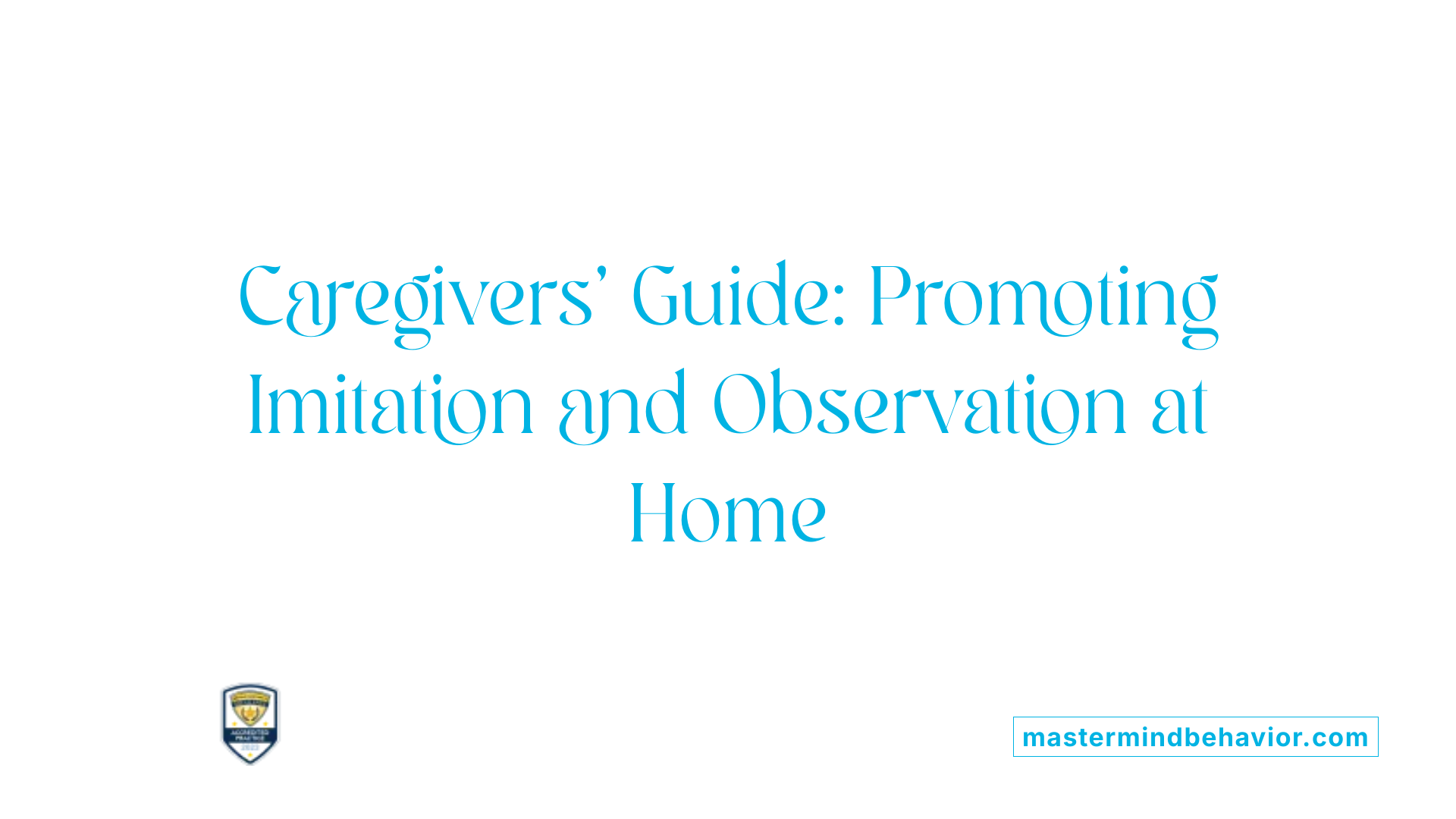
How can caregivers encourage imitation in children with autism?
Caregivers play a vital role in helping children with autism develop imitation skills, which are foundational for language and social growth. The strategy begins with modeling simple, functional movements such as waving, clapping, and pointing. These actions are easy for children to observe and mimic, especially when paired with engaging activities.
Using visual supports, like picture cards and visual cues, can further facilitate imitation. These supports provide concrete demonstrations that children can follow. For example, showing a picture of a person waving and then encouraging the child to do the same helps establish a clear connection.
Providing prompts that are easy to understand is crucial, along with immediate reinforcement. When the child successfully imitates, offering praise or a preferred item reinforces the behavior. Immediate positive feedback increases motivation for the child to try again.
Physical guidance, sometimes called hand-over-hand assistance, can be helpful initially. This support helps the child physically perform the movement. As the child becomes more competent, gradually fading the support encourages independent imitation.
Structured activities like video modeling and social stories are also effective. Video modeling involves showing videos of peers or adults performing specific actions, which children can imitate afterward. Social stories can provide context and step-by-step guidance that makes imitation responses more understandable and engaging.
Incorporating these strategies consistently at home creates a supportive environment that nurtures imitation skills. Over time, these approaches can lead to broader improvements in social interactions, communication, and daily living skills, supporting overall development in children with autism.
Observational Learning: A Key to Broader Skill Development

What is imitation and observational learning in ABA?
Unlike simple imitation, which involves directly copying actions, observational learning is a more comprehensive process that enables children to understand behaviors and their context. It involves several cognitive steps: paying attention to a model, retaining the observed information, reproducing the observed behavior, and being motivated to do so—often driven by reinforcement. This process helps children grasp not just how to perform an action but why it is performed, making it a powerful tool for skill acquisition.
Definition and processes of observational learning
Observational learning, also called social or vicarious learning, occurs when individuals learn new behaviors by watching others, including understanding the reasoning behind actions. The key parts of this process include attention (focusing on the model), retention (remembering the behavior), reproduction (imitating or performing the behavior), and motivation (being incentivized or reinforced to imitate). These steps help in acquiring new skills more efficiently than through trial and error.
Prerequisites: attention, retention, reproduction, motivation
Four essential elements make observational learning successful:
- Attention: The learner must focus on the model or behavior.
- Retention: They need to remember what they observed.
- Reproduction: The learner must have the ability and opportunity to imitate the behavior.
- Motivation: Reinforcements or rewards often motivate children to imitate behaviors.
Children with autism might struggle with these components, especially attention and retention, which can limit their ability to learn through observation.
Why children with autism often struggle with observational learning
Children with autism frequently face challenges in observing and imitating behaviors, partly due to difficulties in attention, memory, and processing social cues. These challenges impact their ability to engage in observational learning, which is crucial for language, social, and cognitive development. As a result, interventions often focus on explicitly teaching imitation and observational skills, often in structured settings like ABA therapy.
Potential benefits of observational learning when facilitated
When observational learning is supported through targeted strategies—such as modeling desired behaviors, prompting, and reinforcement—it can significantly enhance learning outcomes. Recent research indicates that teaching children with autism to monitor peers’ responses, like reading responses during activities, can improve sight word acquisition. Increased attention to models and responses correlates with better skill development.
In practical terms, fostering observational learning helps children develop complex behaviors incrementally, from language and social interaction to daily living skills. As children observe and imitate successful behaviors, they can transfer these skills to new situations, ultimately supporting greater independence and social participation.
| Aspect | Description | Example |
|---|---|---|
| Attention | Focus on the model or behavior | Watching a peer solve a puzzle |
| Retention | Remembering what was observed | Recalling the steps to tie shoelaces |
| Reproduction | Imitating or performing the behavior | Trying to replicate a dance move |
| Motivation | Desire to perform the behavior | Receiving praise for copying a gesture |
Understanding and supporting these processes can lead to meaningful progress, especially for children with autism, who often need structured guidance to harness the benefits of observational learning.
Research and Evidence Supporting Observation-Based Interventions
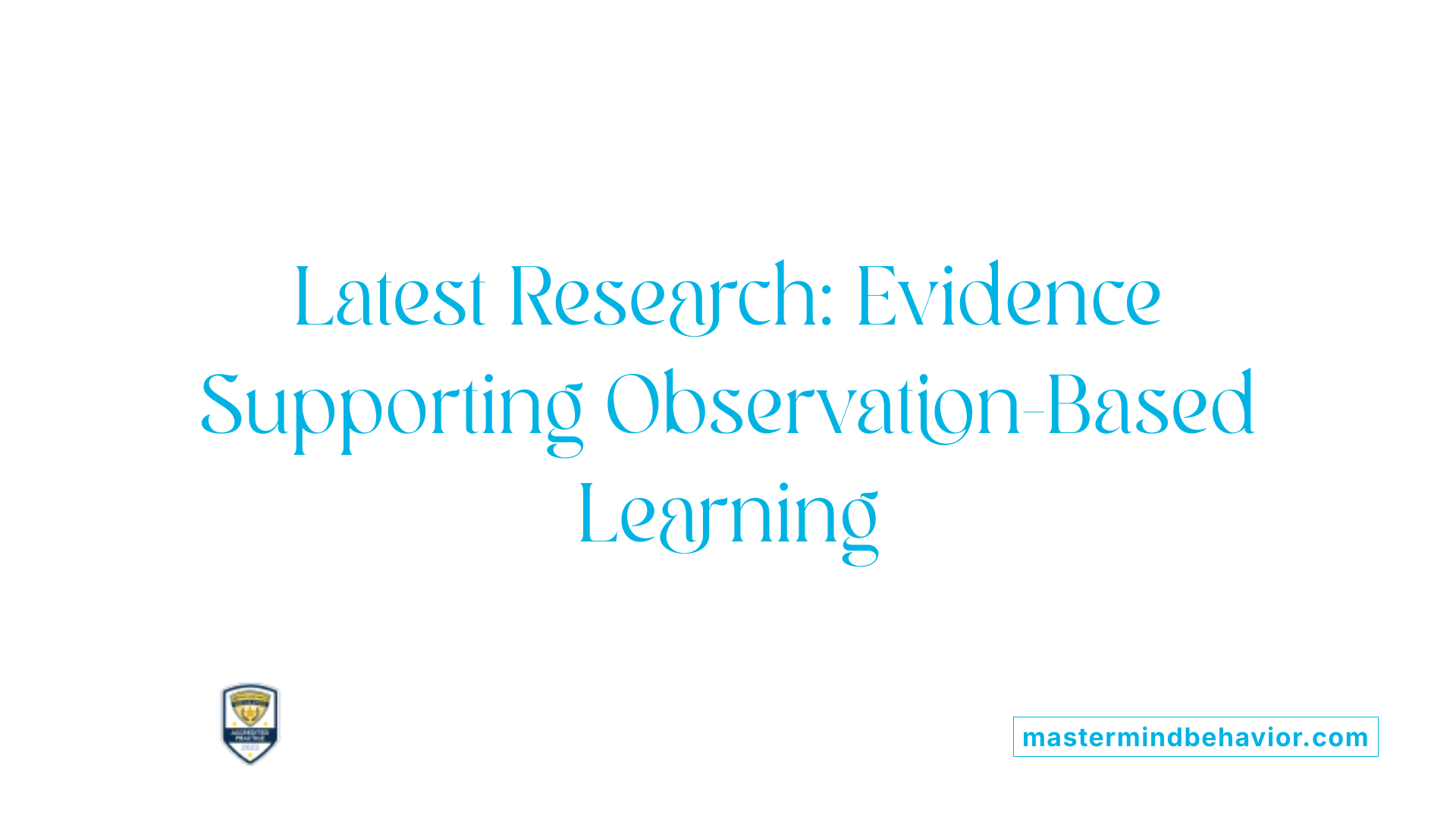
Limited studies on observational learning in autism
Research on how children with autism learn through observation remains limited. Most existing studies focus on teaching imitation skills directly, with few exploring the potential of observational learning to foster skill development. Only one study has specifically addressed training children with autism to improve their observational learning repertoire, highlighting a significant gap in the research. This area warrants further investigation, as observational learning could be a crucial pathway to enhance social, language, and cognitive skills for these children.
Preliminary findings on teaching monitoring responses
Recent preliminary work suggests that training children with autism to monitor their peers' responses can enhance their learning abilities. In a study focused on reading skills, children were taught to pay attention to and imitate their peers’ responses, such as matching instructional materials or reading aloud. This simple yet targeted response—monitoring—appears to support learning new words, especially sight words. Participants were able to learn and retain these skills during training sessions.
Association between increased monitoring responses and skill acquisition
Findings indicate a positive correlation between frequency of monitoring responses and acquisition of new skills. When children actively monitored and imitated the behaviors of their peers, their performance improved notably. Some of these gains persisted even during follow-up periods, suggesting that incorporating monitoring into interventions can produce lasting benefits. This relationship underscores the potential for teaching specific observational responses to facilitate broader learning outcomes.
Implications of research on observational learning in ABA
These emerging findings have important implications for Applied Behavior Analysis (ABA) therapy. Incorporating strategies that teach children to observe, attend, and imitate can make interventions more effective. For children with autism, who often struggle with observational learning, targeted training of monitoring responses may unlock new avenues for skill acquisition. Overall, strengthening observational skills through structured ABA techniques could enhance social, communication, and daily living abilities, emphasizing the need for continued research and practice in this area.
Benefits of Developing Imitation and Observational Skills in Children with Autism
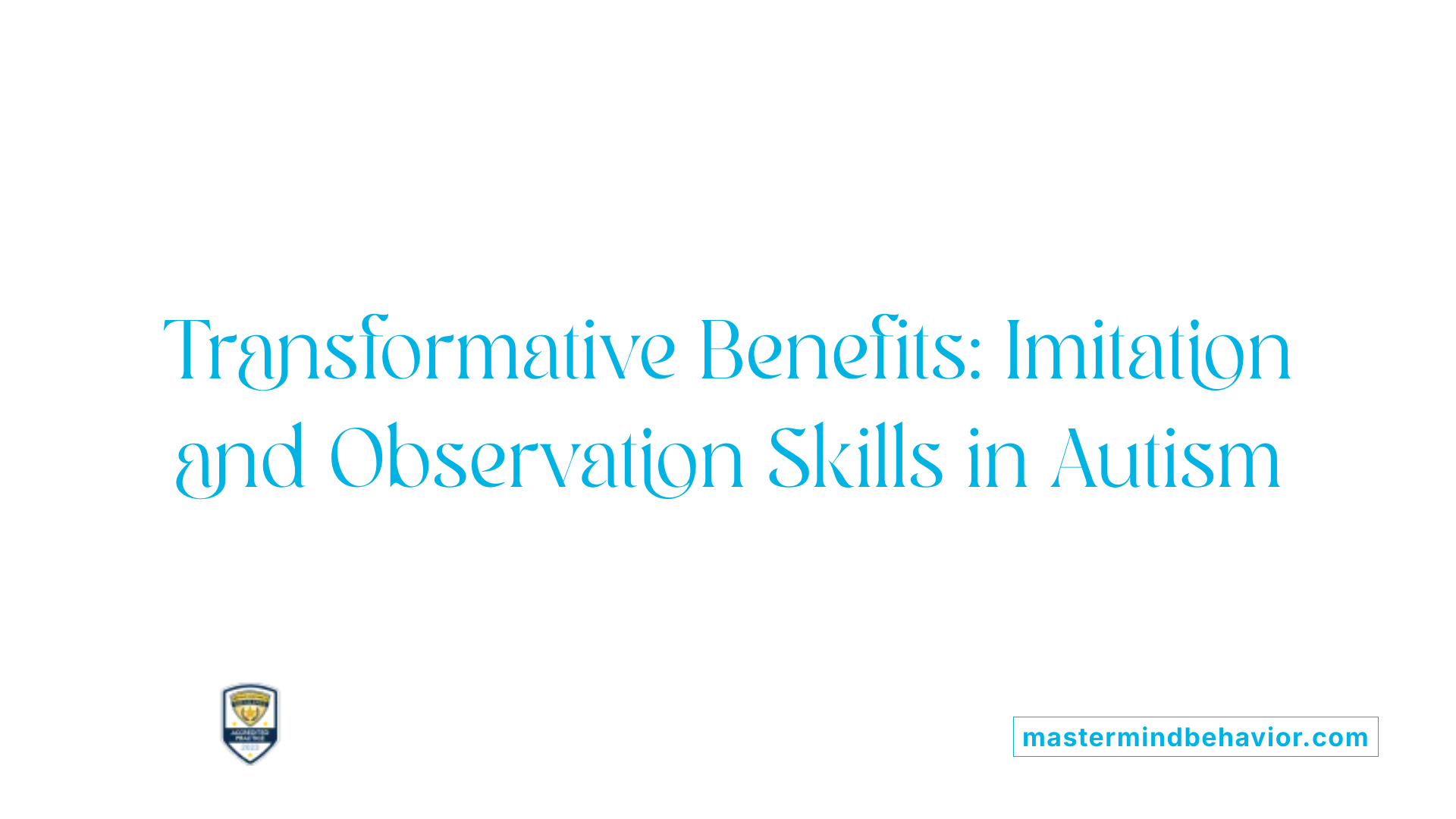
What are the benefits of developing imitation and observational skills in children with autism?
Building imitation and observational skills in children with autism brings many positive outcomes. These skills serve as foundational tools that help children learn new behaviors, especially important since they often face challenges in communication and social interactions.
Imitation skills allow children to replicate actions, gestures, or speech patterns they observe, providing a practical way to practice social and communication behaviors. When children learn through imitation, they can more easily acquire language, develop social interactions, and improve motor skills.
Observational learning, which involves watching and understanding the reasons behind behaviors, offers another pathway for development. Since many children with autism are visual learners, this approach aligns well with their strengths. Visual supports, modeling, and structured environments maximize their ability to observe, process, and apply what they see.
An example of how these skills help: a child who observes a peer opening a lunchbox may, over time, imitate this behavior, gaining independence with daily routines. As children improve their capacity to imitate and learn from observation, they become more motivated to engage in social exchanges and problem-solving.
Evidence-based techniques such as Applied Behavior Analysis (ABA), Discrete Trial Training (DTT), and reciprocal imitation training are effective in teaching these skills. These methods focus on breaking down behaviors into manageable steps, providing reinforcement, and encouraging generalization across settings.
Strengthening imitation and observational skills can also enhance children’s ability to participate in family routines, school activities, and community interactions. Consequently, these skills contribute significantly to greater independence, improved social skills, and a better quality of life.
Overall, fostering imitation and observational learning in autistic children creates pathways for growth and development. It facilitates the acquisition of complex behaviors, supports language and social skills, and aligns with their visual learning preferences, leading to more meaningful and sustained progress.
Practical Considerations and Future Implications
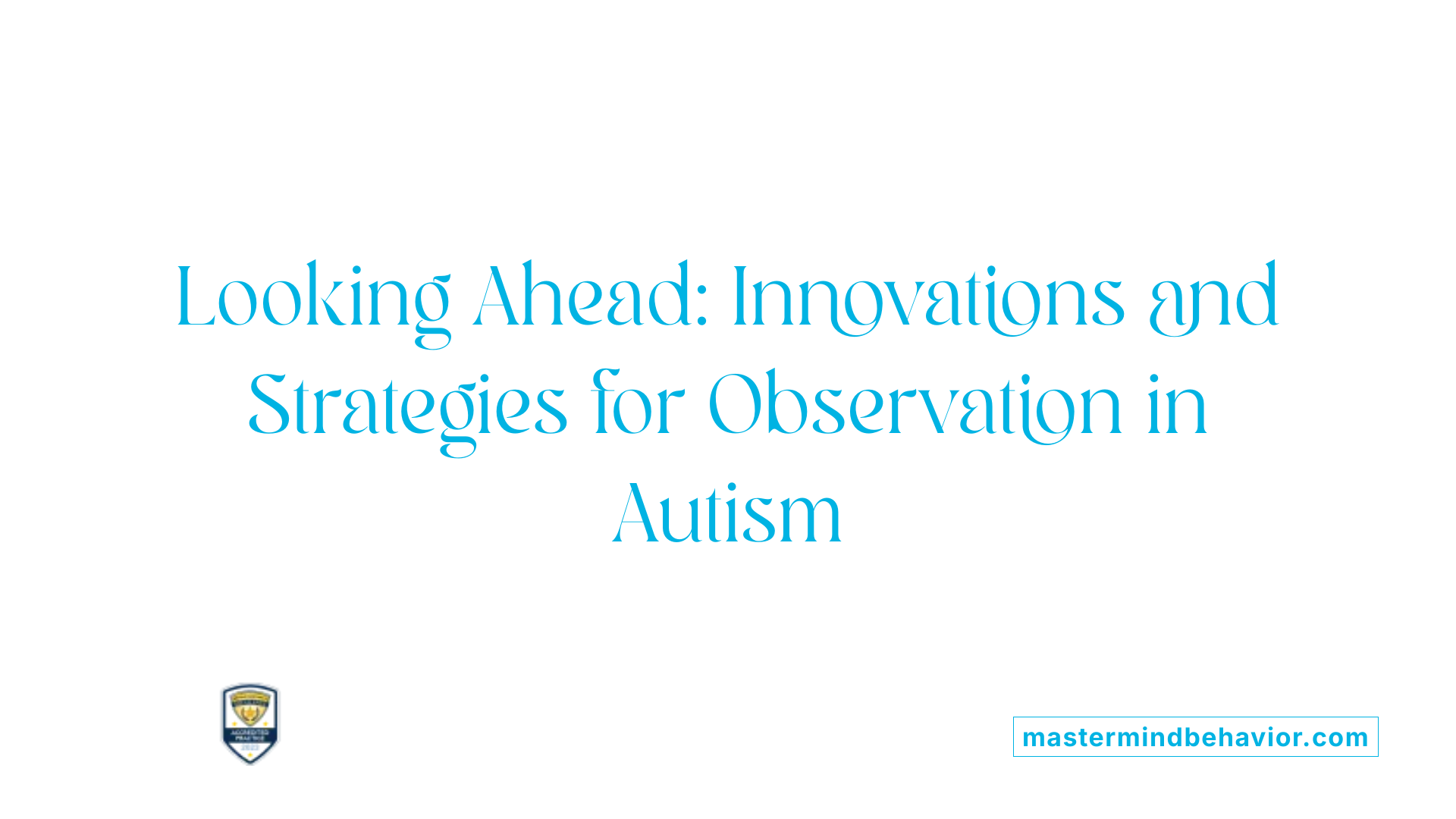 Structured environments and visual supports play a vital role in enhancing observational learning for children with autism. Visual cues, such as pictures, videos, or schedules, align well with the visual strengths of many autistic children, making it easier for them to attend and retain observed behaviors.
Structured environments and visual supports play a vital role in enhancing observational learning for children with autism. Visual cues, such as pictures, videos, or schedules, align well with the visual strengths of many autistic children, making it easier for them to attend and retain observed behaviors.
In practice, ABA therapists often incorporate modeling and prompting within highly organized settings to maximize learning efficiency. For example, using clear step-by-step visual prompts can help children imitate actions more accurately and foster understanding of causality.
Looking ahead, research continues to explore how these approaches can be optimized. There is growing interest in integrating technology, like video modeling and interactive apps, to extend teaching beyond structured sessions. These innovations aim to create more naturalistic environments where children can generalize skills across settings.
Overall, combining structured environments with visual supports not only facilitates immediate learning outcomes but also has the potential to greatly improve the long-term success of observational learning interventions for children with autism.
Conclusion: The Path Forward in Developing Essential Skills
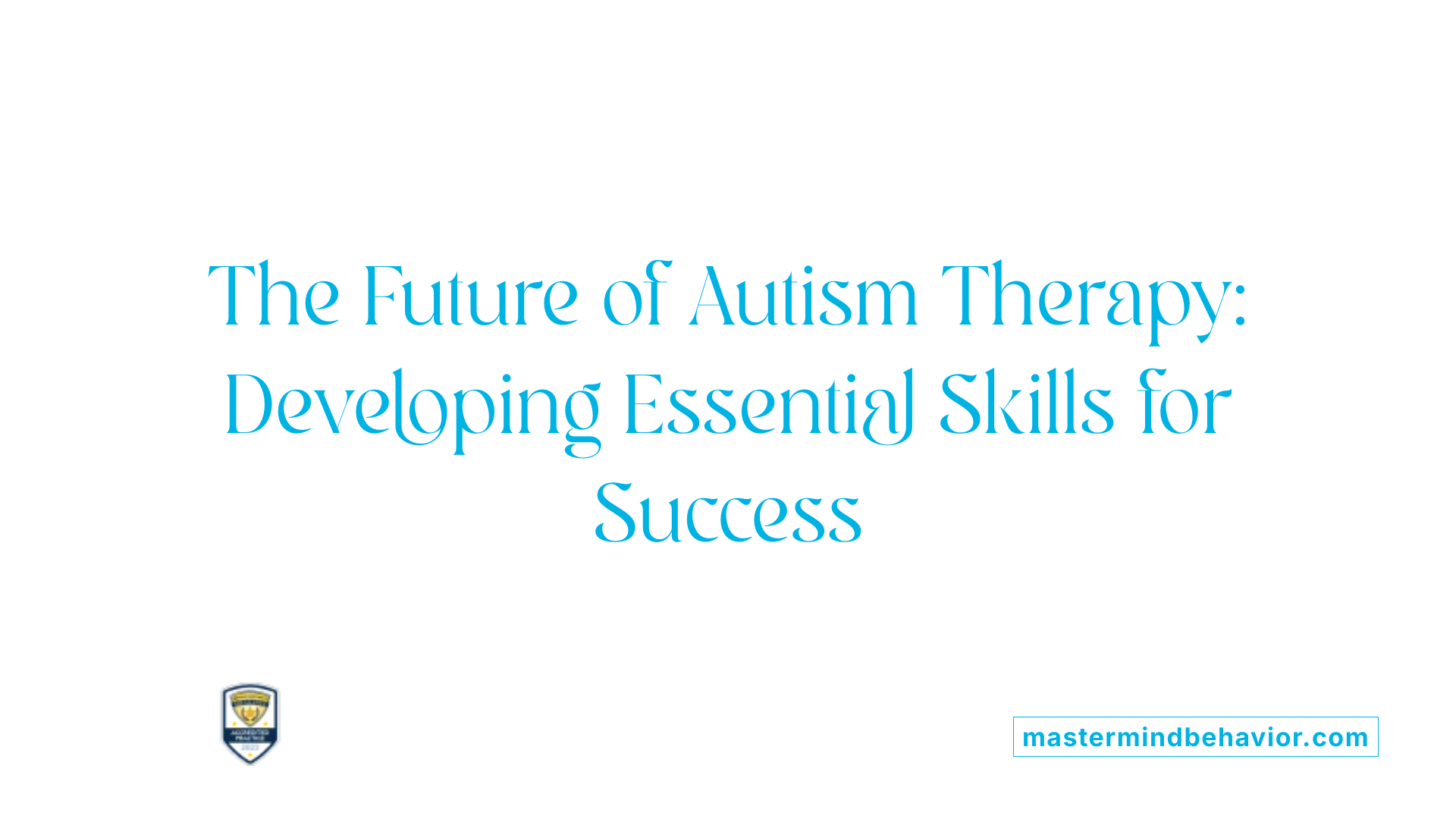 In summary, imitation and observational learning are vital components of skill development, especially for children with autism. Imitation involves quickly copying behaviors, gestures, or speech after watching others, serving as a foundation for more complex skills. Observational learning includes understanding the reasons behind behaviors and applying this knowledge, which enhances learning and social interaction.
In summary, imitation and observational learning are vital components of skill development, especially for children with autism. Imitation involves quickly copying behaviors, gestures, or speech after watching others, serving as a foundation for more complex skills. Observational learning includes understanding the reasons behind behaviors and applying this knowledge, which enhances learning and social interaction.
For children with autism, challenges in attention, memory, and processing can hinder their ability to learn through observation. Structured ABA interventions systematically teach imitation using modeling, prompting, and reinforcement, helping children acquire communication, social, and daily living skills.
Integrating these approaches emphasizes modeling desired behaviors, monitoring responses, and encouraging caregiver involvement. Educating caregivers and providing consistent assessments ensure skills generalize across settings and become part of daily routines.
Fostering these skills through targeted ABA strategies opens pathways for long-term growth in language, social interactions, and independence, guiding future therapy practices for children with autism.
Empowering Growth: The Future of Learning in Autism
ABA therapy’s systematic approach to teaching imitation and observational learning provides children with autism the tools needed to navigate their environment, develop social relationships, and acquire essential life skills. Recognizing the unique visual strengths of autistic children and tailoring interventions accordingly can maximize outcomes. Continued research and caregiver involvement are vital to advancing these methods, ensuring that children with autism can reach their full potential through informed, compassionate, and evidence-based practices.
References
- Imitation vs. Observational Learning: Understanding the Differences
- INCREASING OBSERVATIONAL LEARNING OF CHILDREN WITH ...
- Understanding Imitation in ABA Therapy
- Observational Learning and Children with Autism - LeafWing Center
- What Is Imitation ABA? Understanding the Techniques and Their ...
- What is Imitation and Why is it Important? - May Institute
- Teaching Imitation to Young Children with Autism Spectrum ...
- The impact of object and gesture imitation training on language use ...
- Observational Learning and Children with Autism - LeafWing Center
- Early Stage Development Archives - LuxAI S.A.









